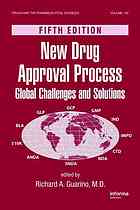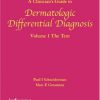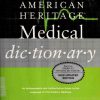New drug approval process 5th Edition by Richard Guarino 1420088491 9781420088496
$50.00 Original price was: $50.00.$35.00Current price is: $35.00.
New drug approval process 5th Edition by Richard Guarino – Ebook PDF Instant Download/Delivery: 1420088491, 9781420088496
Full download New drug approval process 5th Edition after payment

Product details:
ISBN 10: 1420088491
ISBN 13: 9781420088496
Author: Richard A. Guarino
The thoroughly revised Fifth Edition of New Drug Approval Process supplies readers with the latest global changes that affect pharmaceutical product approval and influence how new products are researched and marketed.Updated chapters include:advances in international regulatory requirements, including ICH guidelines and harmonizationa step-by-step
New drug approval process 5th Table of contents:
1 Drug Development Teams
Introduction
Drug Discovery Project Team
Preclinical Drug Development Project Team
Clinical Drug Development Project Team
Drug Development Logic Plan
Conclusion
2 FDA Approvable Indications and Other Considerations
Introduction
Background
Considerations for Patient Benefit of Product
Surrogate Endpoints
Product Development
Precedents
FDA Advisory Panels
Special Protocol Assessment (SPA)
Conclusion
3 Data Presentation for Global Submissions: Text and Tabular Exposition—CTD Format
Introduction
Text Exposition
Content
Tone
Conciseness
Correctness
Consistency
Clarity
Outline of Sections and Subsections
Indenting
Global to Specific
Tabular Presentation
Title
Data Source
Footnotes
Orientation
Order of Data Presentation
Present Meaningful Data Together
Conclusion
References
4 Technology Change—Enabling Clinical Research and Drug Development Processes
Introduction
People, Process—and Then Technology
Technology Adoption Life Cycle
The Interent
Intranets and Extranets
The Software As a Service (SaaS) Business Model
Security
Hardware
Software
General Software Applications
Data Standards
eDiscovery Software
ePreclinical Software
eClinical Software
Electronic Data Capture (EDC) and Electronic Patient Reported Outcomes (ePRO)
Clinical Trials Management Systems (CTMS)
Collaboration Software
Database Management Systems (DBMS)
Document Management Systems
Portals and Data Warehouses
Conclusion
5 Working with a Contract Research Organization (CRO)
Part I Contract Research Organizations
Introduction
Nonclinical Contract Research Organizations
CRO Identification and Selection
Virtual Company Strategy
Preselected Strategy
Special Study Strategy
CRO Monitoring
Conclusion
Part II Clinical Contract Research Organizations
Introduction
Defining the Scope and Choosing a Clinical CRO
Working with the CRO
Conclusion
6 Industry and FDA Liaison
Introduction
Inspections and Legal Sanctions
Scientific Expertise
Product Safety
FDA’S Major Program Centers
The Center for Drug Evaluation and Research (CDER)
Contacts and Communications with FDA
Consumer/Industry Inquiries
Industry/FDA Meetings
Meeting Requests
FDA/Industry Meetings
Pre-IND/Preclinical Meetings
End-of-Phase 2 Meeting (EOP2)
Preparing for an End-of-Phase 2 Meeting
End-of-Phase 2 Conference—Summary
Pre-NDA/BLA/CTD Meetings
Advisory Committee Meetings
FDA Initiatives to Speed Drug Approval
Accelerated Development/Review Program
Treatment IND
FDA Guidance Documents/Guidelines
Freedom of Information ACT (FOIA)
Obtaining Public Information
Obtaining Information Through FOI
How to Make a FOI Request
Fees
Summary
7 Nonclinical Drug Development: Pharmacology, Drug Metabolism, and Toxicology
Introduction
Overview of Drug Discovery and Development
Pharmacology
Developability Assessment
Pharmacology
Bioanalytical Chemistry Method Development
Early Nonclinical Formulation Development and Delivery
Preliminary Animal Pharmacokinetics
Preliminary Drug Metabolism
Acute Toxicology Studies
In Vitro Toxicology Assessments
Acute or Single-Dose Tolerability Studies
Dose-Range-Finding Studies
Pilot, 14-Day Studies
Safety Pharmacology and Genotoxicity
Drug Development Candidate Selection
Preclinical Drug Development
Good Laboratory Practice
Bioanalytical Chemistry
Pharmacokinetic and Bioavailability Experiments
Drug Metabolism
Toxicology
Local Tolerance
Genotoxicity
Safety Pharmacology
Subchronic Toxicology
Formulation Analyses
Toxicokinetics
Hematology, Clinical Chemistry, and Histopathology
Immunogenicity
Nonclinical Drug Development
Pharmacokinetics
Drug Metabolism
Toxicology
Chronic Studies
Reproductive and Developmental Toxicology
Carcinogenicity
Conclusion
References
8 The Investigational New Drug Application (IND), the Investigational Medicinal Product Dossier (IMPD) and the Investigator’s Brochure (IB)
Overview
The Investigational New Drug Application
Introduction
General Information Regarding INDs
Exemptions
Labeling Requirements for an Investigational New Drug
Waivers
Preconsultation Program
Binders for IND Submissions
Address for IND Submissions
Availability for Public Disclosure of IND Data
Phases of Clinical Investigations
Phase 1
INDs for Phase 1 Trials
Requirements for Protocols
Requirements for CMC Information
Pharmacology and Toxicology Information
IND Submissions Assessments
Form FDA 1571
IND Content and Format
Protocol and Information Amendments
IND Safety Reports
Annual Reports
Clinical Holds and Withdrawal of an IND
The Investigator’s Brochure
Introduction
The Investigational Medicinal Product Dossier (IMPD) and Required Documentation to Conduct Clinical Research in the EU
Introduction
Overall Content of the IMPD
Simplified IMPD
Conclusions
9 New Product Applications for Global Pharmaceutical Product Approvals: U.S. NDA Vs. Global CTD Formats
Introduction
General Overview of New Drug Applications
Retrospective Overview of the NDA in the United States (Review and Archival Copies)
The Paper NDA—Required Information
General Format
Contents of the Archival Copy
Contents Review Copy
Other NDA Submission Requirements
Pagination/Volume Size/Identification
Packing Cartons
Overall Comments
U.S. NDA VS. CTD Format
Region Specific Documentation
Formats for New Product Applications
Overall Comments Between an NDA and CTD Format
Listing of IND and NDA Investigators
Background/Overview of Clinical Investigations
Clinical Pharmacology
Controlled Clinical Studies
Study Reports
Safety Information
Uncontrolled Clinical Studies
Other Studies and Information
Organizing Common Technical Documents Summaries
Quality
Safety (Nonclinical Pharmacology, Pharmacokinetics, and Toxicology) Summary
Human Pharmacokinetics and Bioavailability Summary
Microbiology Summary
Clinical Data Summary and Results of Statistical Analysis (Module 2)
Clinical Pharmacology
Overview of Clinical Studies
Controlled Clinical Studies
Uncontrolled Clinical Studies
Other Studies and Information
Safety Summary—General Safety Conclusions
Discussion of Benefit/Risk Relationship and Proposed Postmarketing Studies
Summary and Critique
CTD Review Guide
References
10 Abbreviated and Supplemental New Drug Applications (ANDAs and SNDAs)
Abbreviated New Drug Application
Background History
Anda Content
General
Legal Requirements and Guidance Documents
ANDA CHECKLIST for CTD or eCTD FORMAT FOR COMPLETENESS and ACCEPTABILITY of an APPLICATION FOR FILING
Additional Comments Regarding the ANDA
Amendments to an Unapproved ANDA
Postmarketing Reports
Summary
Supplemental New Drug Applications
SNDA/SANDA Checklist
Summary
Bibliography
11 The CTD and eCTD for the Registration of Pharmaceuticals for Human Use
Introduction
CTD Overview
Module 2 Common Technical Document Summaries
Quality Overall Summary
Nonclinical Overview
Clinical Overview
Nonclinical Written and Tabulated Summaries
Clinical Summary
Module 3 Quality
Module 4 Nonclinical Study Reports
Module 5 Clinical Study Reports
eCTD
Conclusions
References
12 The Biologic License Application
Introduction
A Short History of the Licensing Process for Biologicals
Introduction to BLAs: Content and Formating Requirements
The Contents of the BLA
Cover Letter
Application Form FDA 356(h)
Item 1 Index
Item 2 Labeling Section
Item 3 Summary Section
Item 4 Chemistry Section
Chemistry, Manufacturing, and Controls Information
Drug Substance
Drug Product
Investigational Product/Formulation
Environmental Assessment
Method Validation
Samples
Methods Validation Package
Item 5 Nonclinical Pharmacology and Toxicology Section
Item 6 Human Pharmacokinetics and Bioavailability Section
Item 7 Clinical Microbiology
Item 8 Clinical Data Section
Item 9 Safety Update Report
Item 10 Statistical Section
Item 11 Case Report Tabulations Section
Item 12 Case Report Forms (CRFs) Section
Item 13 Patent Information Section
Item 14 Patent Certification Section
Item 15 Establishment Description Section
General Information
Specific Systems
Contamination/Cross-Contamination Issues
Item 16 Debarment Certification Section
Item 17 Field Copy Certification Section
Item 18 User Fee Cover Sheet Section (Form FDA 3397)
Item 19 Financial Information Section
Item 20 Other
Amending the License Application
Supplement to the Original BLA
Assembling and Submitting the BLA
13 Chemistry, Manufacturing, and Control (ICH Quality Guidelines)
Introduction
The NDA Summary
The Drug Substance
Names
Physical and Chemical Properties
Stability
Manufacture
Method of Manufacture
Process Controls
Specifications and Analytical Methods
Container/Closure System
The Drug Product
Composition of the Dosage Form
Manufacturer
Method of Manufacture
Specifications and Analytical Methods
Container/Closure System
Stability
Test Formulations
Chemistry, Manufacturing, and Controls Information
The Drug Substance
Names
Structural Formula and Chemical Name(s)
Physical and Chemical Properties
Proof of Structure
Stability
Manufacturer
Method of Manufacture
Starting Materials—Specifications and Tests
Solvents, Reagents, and Auxiliary Materials
Drug Substance Synthesis
Antibiotics and Other Products Obtained by Fermentation Processes
Drug Substances Isolated from Plant or Animal Sources
Process Controls
Reprocessing
Reference Standard Preparation
Specifications and Analytical Methods
Container/Closure System
Drug Product
Components
Composition
Specifications and Analytical Methods for Inactive Components
Manufacturer
Method of Manufacture, Packaging Procedure, and In-Process Control
Regulatory Specifications and Analytical Methods for Drug Product
Container/Closure System(s)
Stability
Environmental Assessment
Samples
Methods Validation Package
Test Methods and Specifications
Supporting Data
Test Results
Abbreviated New Drug Application
Summary
Drug Substance Sources
Specifications
Drug Product Requirements
ANDA Expiration Dates
Conclusion
Bibliography
14 New Medical Device Approval Process in the United States
Background and History
Premarket Notification (510k)
Clinical Data
Investigational Device Exemptions
An IDE Submission
Submitting an IDE
FDA Action on Applications
Responsibilities of Sponsors
Retention Period
Inspection
Responsibilities of Investigators and IRBS
IDE Guidance
Labeling
Prohibition of Promotion and Other Practices
Import and Export Requirements
PMA
The PMA Submission
Format
PMA Filing Review
Presubmission Interaction
FDA Action on a PMA
FDA Steps in the PMA Application Process
Panel Review
Conditions of Approval
Availability of Safety and Effectiveness Summaries for PMAS
References
15 Orphan Drugs
Introduction
Benefits for Developing Orphan Drugs in the United States
How to Obtain Orphan Product Designation
Orphan Drug Application
Background and Significance
Content and Format of a Request for Written Recommendations of Orphan Drugs (21 CFR Subpart B 316.10)
Recommendations for Submission of an Orphan Drug Designation
Clinical Studies of Safety and Effectiveness of Orphan Products
Orphan Drug Grant Requests
Scientific/Technical Review Criteria
FDA Review and Actions
Annual Reports
Summary
References
16 Clinical Research Protocols
Introduction
Trail Objective
General Considerations in Protocol Design
Different Trail Designs
Controlled Trails
Blinding Techniques
Uncontrolled Trials
Parallel and Crossover Trial Designs
A Guideline for Elements of a Protocol: A Checklist
Title Page
A Phase 2 Double-Blind Parallel Trial of Dose Tolerance, Safety, and Efficacy Comparing Drug a to Placebo in Controlling Symptoms of Mild to Moderate Hypertension
Table of Contents
Introduction/Background
Bibliography
Objective
General
Risks
Confidentiality
Materials and Methods
Subject Sample
Age Range
Gender
Subject Inclusion and Exclusion Criteria
Trial Procedures
Trial Drugs
Assignment of Trial Products
Dosage Range (if any)
Dosage Schedule
Administration of Trial Medication
Labeling of Trial Medications
Medication Accountability
Duration of Drug Treatment
Concomitant Medications
Case Report Forms (CRFs)
Content of the Case Report Form
Laboratory Assessments
Adverse Experiences
Data Entry and Statistical Methodology of Data
Overall Duration of the Trial
Institutional Review Board (IRB) Independent Ethics Committee (IEC)
Informed Consent (IC)
Monitoring
Location of Trial
Location of Laboratory Testing Facilities
Investigator’s Obligations
Signature Page
Amendments and Addenda
Amendments
Addenda
Summary
Bibliography
17 Institutional Review Board/Independent Ethics Committee and Informed Consent: Protecting Research Subjects in the U.S. and Foreign Clinical Trials
Introduction
Background
IRB Duties
IRB Membership and Responsibilities
IRB Documentation and Operations
Information Required for IRB Review
Initial Approval and Continuing Review
Expedited Reviews
The Informed Consent Form
Basic Elements of the Informed Consent (21 CFR 50.25)
Additional Elements of the Informed Consent [21 CFR 50.25(B)]
Oral Consent
Emergency Use of Investigational Drug/Biologics
Informed Consent During Emergency Use
Health Insurance Portability and Accountability Act (HIPAA)
Assuring That Regulatory Obligations are Adequately Implemented
Audits Versus Inspections
Common Auditing/Inspectional Findings: IRBS
Common Auditing/Inspectional Findings: Informed Consent
Safety and Welfare Considerations for Subjects in Foreign Trials
Bibliography
18 HIPAA: A New Requirement to the Clinical Study Process
Introduction
HIPAA Basics
Who are the covered entities?
Who are not covered entities?
Section 164.308—Administrative Safeguards
Section 164.310—Physical Safeguards
HIPAAs Impact on Clinical Research
Covered and Not Covered Entities
Who are the covered entities?
Who are not covered entities?
Applicability
HIPAA Syntax
PHI Authorization for Clinical Trials
Background
Enforcement of HIPAA
Authorization for Clinical Trials
Relationship to IC
IRBs
Privacy Boards
IRB or Privacy Waivers of Authorization
Waiver of a Research Database
Study Recruitment
Limited Data Sets
References
Bibliography
19 Adverse Events and Reactions: Etiology, Drug Interactions, Collection, and Reporting
Introduction
Classification of Adverse Drug Reactions
Dose-Dependent AEs
Precautions of Drug Use in Pregnant Women
Antibacterial and Antibiotic Drugs
Anticoagulants
Antithyroid Drugs
Oral Hypoglycemia Drugs
Cardiovascular Drugs
Anesthetics, Analgesics, and Hypnotics
Nursing Women
Women of Childbearing Potential
Geriatric Population
Pediatric Population
Enzyme Abnormalities
Inherited Enzyme Abnormalities
Liver Diseases and Functions
Renal Function
Dose-Independent AEs
Drug Interactions
Mechanisms of Drug Interactions
Pharmacokinetic Pathways and Drug Interactions
Absorption
Distribution Competition for Transport Sites
Interference with Drug Metabolism
Modification of Drug Event at Sites of Action
Excretion
The Beneficial Effects of Drug Interactions
Collection, Evaluation, and Reporting of Adverse Events to Drugs
Overview
Collecting AEs—Legal Responsibilities
Investigational Drugs
Reporting AEs from Study Subjects During Clinical Investigations
Postmarketing Reporting
The Marketing Authorized Holder (MAH)
Regulatory Agencies Globally
Professional (Physicians and Pharmacists) and Consumers
Literature
Postmarketing Surveillance
Evaluation of AEs
Investigational Drugs
Completed Clinical Trials
Postmarketing Surveillance
Spontaneous Reports
Observational Studies
Registries
Reporting Adverse Reactions
Investigational Stage
Postmarketing Stage
Assessment of Adverse Reactions
ICH Guidelines
Adverse Event Disclaimers
General
European Guidelines on Collection and Verification of Adverse Reactions
Summary and Conclusion
References
20 Biostatistics in Pharmaceutical Product Development Facts, Recommendations, and Solutions
Introduction: The Role of Biostatistics in Late-Stage Pharmaceutical Development
Alpha = 0.05
The Price of Power
Safety by Design
Signal Detection and EDA (Exploratory Data Analysis)
Sources of Bias
Sampling
Data Refinement
Regulatory Oversight
Experimental Design in Clinical Trials: Theory and Practice
Sample Size and Experimental Design
Sensitivity and Cost
Recommendations
Random Sampling
Recommendations
Data Refinement
Safety Signal Detection and EDA
Recommendations
Summary
21 CFR/ICH/EU GCP Obligations of Investigators, Sponsors, and Monitors
Introduction
Investigator Obligations
Other Investigator Responsibilities
Investigator Penalties
Sponsor Obligations
Sponsor and Monitor Obligations
22 Quality Assurance
Introduction
Challenges of QA
QA and Legislation
Definition of QA
QA Function
QA Department
QA Activities
QA Tools and Techniques
QA During the Product Life Cycle
Regulatory Inspections
Future Value of QA
References
23 Managing and Monitoring Clinical Trials
Overview
Regulations and Guidelines
Clinical Trial Management
Investigator Selection
Clinical Monitors
PISV
Investigator Meetings
SIV
Periodic Monitoring of a Clinical Trial
Trial Conduct/Execution
Subject Recruitment
Product Accountability
Financial Disclosure—U.S. Requirement Only
Record Retention
Study Closure Visit (SCV)
Summary
References
24 European CT Directive: Implementation and Update
Glossary
Background
Purpose
Scope
Definitions
Principal Elements of Directive Articles, Detailed Guidelines, and Guidance Documents
Protection of Clinical Trial Subjects, Minors, and Incapacitated Adults
Ethics Committee, Single Opinion, and Detailed Guidance
Commencement of a Clinical Trial
Conduct of a Clinical Trial
Exchange of Information, Suspension or Infringements, European Clinical Trials EUDRACT Database
Manufacture, Import, and Labeling of Investigational Medical Products
Inspections, Verification of Compliance of Investigational Medical Products with Good Clinical Practice and Good Manufacturing Practice
Adverse Experiences (AEs) and Serious Adverse Reactions (SARs) Notification, Collection, Verification, Presentation and Reporting, SUSAR Database, Eudravigilance Clinical Trial Module Database
General Provisions, Adaptation to Scientific and Technical Progress, Committee Procedure, Application, Entry into Force, and Addressees
Implementation
Implications for Future Research
References
25 Combination Products
Clinical Investigation and Premarket Review Requirements for Drugs and Medical Devices
User Fees
Nonclinical Recommendations for Successful Characterization and Development of Combination Drug Products
Clinical Pharmacology and Clinical Development of Combination Products
Regulatory Strategy Considerations for CMC
References
26 The Current State of GXP in China
Good Clinical Certificate Practice in Clinical Trials in China
Introduction
SFDA Structure and Regulatory Responsibilities
Establishment of a GCCP System in China
Administration Office at Clinical Institution
Independent Ethics Committee
Certified Clinical Institution
Institution Qualifications
Auditing Clinical Institution
Certification Requirements for Trial Drugs
Certification Requirements for Preclinical Data
Implementation of GCCP in China
Conclusion
The NDA Registration Process and Critical Tips in the Conduct of Clinical Trials in China
Background
Basics of an NDA Application in China
Law and Regulation
Health Authority
Qualification of the Foreign Applicant
Types and Materials of an NDA Application to SFDA
Type of the Application and New Application Category
Dossier Requirements
NDA Application Process in China
Logistical Requirements of the NDA Registration in China
Clinical Trial Requirement
Specific Review and Approval Process
NDA Application Fee
NDA Reviewing Timeline
Critical Tips in the Conduction of Clinical Trials in China
Legal and Regulatory Basis for Drug Researches
Characteristics of Clinical Trials Conductions in China
Major Provisions to Run a Clinical Trial in China
Before Clinical Trials
During Clinical Trials
At the End of Clinical Trials
Preparation of Investigational Drugs
Time Demand of Starting Trial
International Multicenter Clinical Study
Conclusion
Medical Devices and Clinical Research in China
Background
Legal Basis for Medical Devices Supervision
Regulations Basis
Regulatory Body System
Authorization Requirements on Device Registration for Foreign Companies in China
Types and Materials of a Medical Device Registration Application to SFDA
Process of the New and Renewal Application for Medical Devices Registration
Dossiers Requirements for the Medical Device Registration in China
Logistical Requirements of Medical Device Clinical Trials in China
Prerequisites of Clinical Trial Waiver
For the Device Product Manufactured Overseas
For Device Products Locally Manufactured
Special Attentions to be Paid in the Medical Device Registration in China
Conclusion
Registration Information Requirements of Natural Drugs in China
Introduction
Registration Categories and Notes
Registration Categories
Notes
Application Content Items and Notes
Application Content Items
Notes to Application Content Items
Special Attentions on Application Dossiers of the Natural Drug Registration
Conclusion
References
Acronyms and Initialisms
People also search for New drug approval process 5th:
new drug approval process fda
3 new deal program
orphan drug approval timeline
phase 5 drug court
Tags:
Richard Guarino,drug,approval,process



